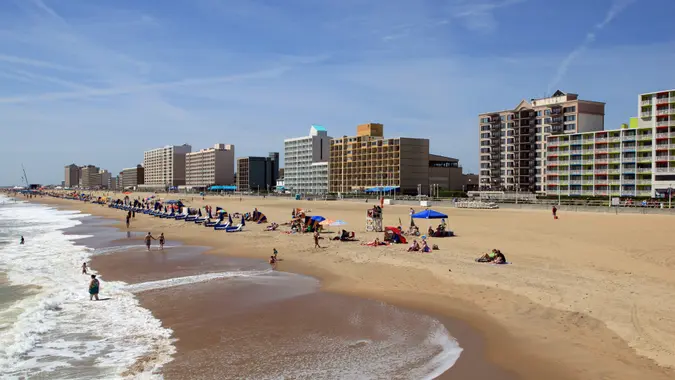No. 1 Thing To Get Rid of in Retirement Without Sacrificing Your Lifestyle

Commitment to Our Readers
GOBankingRates' editorial team is committed to bringing you unbiased reviews and information. We use data-driven methodologies to evaluate financial products and services - our reviews and ratings are not influenced by advertisers. You can read more about our editorial guidelines and our products and services review methodology.

20 Years
Helping You Live Richer

Reviewed
by Experts

Trusted by
Millions of Readers
Retirement brings numerous financial changes, including an end to expenses you regularly paid while working. For example, you no longer need to pay for a daily commute into the office when you’re retired. You can also get rid of ancillary expenses since you’ll be home more often, such as professional attire, lunches out and pet care.
Deciding which expense to cut first in retirement largely depends on your personal financial situation. For many retirees, however, the decision is easy — and it doesn’t mean sacrificing your lifestyle.
The No. 1 Thing To Cut: Getting Rid of the Second Car
A second car might have been a necessity in previous years, when you and your spouse were juggling commutes. But most retired couples can get by with a single car since you don’t have to drive to work anymore. Cutting out a car payment — along with the taxes, fees, insurance, fuel and maintenance that go along with it — can help bolster your finances in a big way.
According to AAA’s 2025 Your Driving Costs analysis, the average cost of owning and operating a new vehicle is $11,577 a year, or about $965 per month. This represents a decrease of $719 from 2024’s average of $12,297 annually, driven by lower depreciation, reduced finance charges, and decreased fuel prices.
Additionally, as various financial experts note, actual expenses can vary significantly based on factors such as the type of car and its maintenance costs. But even if you spend half as much as average on a second car, you could still spend around $480 per month on it — money that could help cover essential expenses such as housing, utilities, groceries and healthcare.
As a bonus, the money you get from selling your second car can go toward paying down debt or adding to your nest egg.
Other Expenses You Can Cut in Retirement
If you don’t have a second car (or any car), here are some other expenses you can cut in retirement:
Dining Out
Dining out is essentially a luxury, and you can save big by getting rid of it in retirement. If you don’t want to cook yourself, you can still get prepared meals at your local supermarket that cost far less than restaurant meals.
Impulse Purchases
Impulse purchases might include an impromptu road trip, new electronics or a kitchen appliance you think you can’t live without — even though you have for decades. Retirement is the time when you need to rein in these kinds of purchases.
Peak Travel Costs
When you were working, you probably had to fit travel into weekends, summer vacations or holidays — the most expensive times. Now that you have a more flexible schedule, you can save a lot of money on hotels, air fare and car rentals by traveling on weekdays and during off-peak seasons.
Bottom Line
Cutting unnecessary expenses in retirement doesn’t mean sacrificing your quality of life. Eliminating your second car and other non-essential costs allows you to redirect those funds toward what truly matters — building a financially secure, comfortable retirement that lasts.
 Written by
Written by  Edited by
Edited by 

























